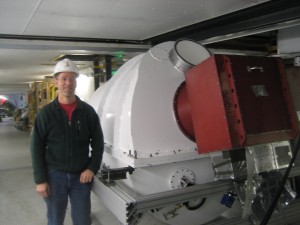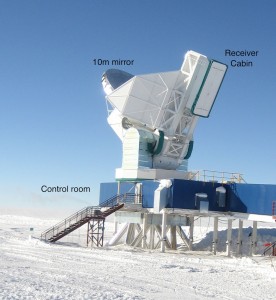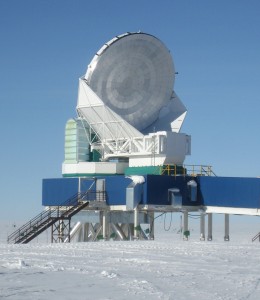The South PoleTelescope (SPT) is a large (10m diameter) millimeter-wave telescope at the South Pole that we (along with a long list of collaborators) helped design and build.
First light was in 2007, with a large-format millimeter-wave “camera” that we used to detect new clusters of galaxies via the Sunyaev-Zeldovich (SZ) effect and to map the small angular scale temperature variations in the CMB. The SZ effect is a great tool for finding new clusters because the signal is nearly independent of distance to the cluster, so we can detect them all the way back to the beginnings of cluster formation. We have a catalog of 100’s of clusters and have worked with collaborators using optical telescopes to measure their redshifts (telling us how far away they are). We’re using these clusters as probes of the expansion history of the universe, a(t). By charting a(t), we can learn more about the properties of the Dark Energy that is currently accelerating the expansion.

We also (along with all those great collaborators!) a second-generation camera for SPT, which saw first light in January 2012. We’re using that camera to measure the lensing of CMB photon paths by structure along the line of sight (and thereby understand much better the distribution of Dark Matter in the universe, and eventually to measure the mass of neutrinos) as well as search for the effects of primordial gravity waves that may have been created during the Inflationary epoch, when the universe was only 10^-34 seconds old.
The SPT collaboration includes groups at U. Chicago, UC Berkeley, ANL, Fermilab, LBNL, Harvard CfA, NIST, Stanford, Cardiff, U. Illinois, McGill, and U. Colorado. The main SPT website is maintained at U. Chicago, at http://spt.uchicago.edu/.

